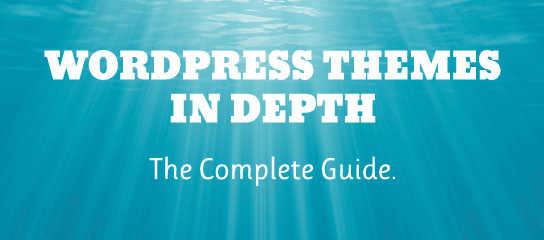CSS Hacks for Different Versions of Firefox
In a perfect world, I don’t use CSS hacks, and certainly don’t recommend them. In the unpredictable, chaos of the real world, however, there are many situations where applying styles to particular browsers is indeed the optimal solution. Most of the time, I am targeting or filtering Internet Explorer (because it is so incredibly awesome), but occasionally I need to tweak something in a modern browser like Firefox, Safari, or Opera. In this article, we’ll look at CSS hacks targeting […] Continue reading »
5G Blacklist 2013
Following up on much feedback (and this post), here is an update for the 5G Blacklist for 2013. As explained in the 2012 article (and elsewhere), the 5G Blacklist helps reduce the number of malicious URL requests that hit your website. It’s one of many ways to improve the security of your site and protect against evil exploits, bad requests, and other nefarious garbage. If your site runs on Apache and you’re familiar with .htaccess, the 5G is an effective […] Continue reading »
Stop 404s for Mobile Versions of Your Site
If you’ve been keeping an eye on your 404 errors recently, you will have noticed an increase in requests for nonexistent mobile files and directories, especially over the past year or so. The scripts and bots requesting these files from your server seem to be looking for a mobile version of your site. Unfortunately, they are wasting bandwidth and resources in the process. It has become common to see the following 404 errors constantly repeated in your log files: http://domain.tld/apple-touch-icon.png […] Continue reading »
Digging Into WordPress Version 3.0
It’s here! Digging Into WordPress Version 3.0 is packed with goodness, including a new chapter on WordPress v3.0, updated core content, added resources, and a super-sleek new cover. Continue reading »
Embed External Content via iframe and div
By using an <iframe></iframe> within a <div></div>, it is possible to include external web content in most any web document. This method serves as an excellent alternative to actual frames, which are not as flexible and definitely not as popular. Indeed, with CSS, the placement, sizing, and styling of div’s provides endless possibilities for embedding external or even internal web content into pages that would otherwise require the use of frames, Flash, or JavaScript. This method works on any modern […] Continue reading »
Better Image Caching with CSS
I have written previously on the fine art of preloading images without JavaScript using only CSS. These caching techniques have evolved in terms of effectiveness and accuracy, but may be improved further to allow for greater cross-browser functionality. In this post, I share a “CSS-only” preloading method that works better under a broader set of conditions. Previous image-preloading techniques target all browsers, devices, and media types. Unfortunately, certain browsers do not load images that are hidden directly (via the <img […] Continue reading »
Really Simple Browser Detection with jQuery
For my Serious redesign, I push the envelope in terms of CSS’ advanced selector functionality. Stuff like: p:first-child p:first-child:first-letter p:first-child:after p:first-child:first-line Plus lots of other stylistic tricks that require CSS3 support in order to display as intended. Fortunately, most of the browsers to which I am catering with this new design have no problems with most of the advanced stuff. Of course, Internet Explorer chokes on just about everything, but fortunately IE’s proprietary conditional comments make it easy to fix […] Continue reading »
WP Custom Fields, Part II: Tips and Tricks
As we have seen in our previous post, WordPress Custom Fields Part I, custom fields provide an excellent way to add flexible content to your posts and pages. By assigning various types of content to different custom fields, you gain complete control over when, where, and how to display the associated information. For example, sub-headings may be displayed in the sidebar, footnotes may be consolidated into a single region, post images may be displayed before the post title, and so […] Continue reading »
PHP Short Open Tag: Convenient Shortcut or Short Changing Security?
Most of us learned how to use “echo()” in one of our very first PHP tutorials. That was certainly the case for me. As a consequence, I never really had a need to visit PHP’s documentation page for echo(). On a recent visit to Perishable Press, I saw a Tumblr post from Jeff about the use of PHP’s shortcut syntax for echo() but somewhere deep in my memory, there lurked a warning about its use. I decided to investigate. Continue reading »
Sexy HTML List Tricks
Behold the ubiquitous list elements, <ul></ul> and <ol></ol>! These two sexy elements help millions of websites display lists of information in clean, semantic fashion. Without them, we’d be crawling around like filthy cavemen, eating dirt and howling at the moon. But these list elements aren’t just sexy, they are also extremely flexible, enabling us humble designers to create robust list configurations that are semantically versatile and highly customizable. We all know how to throw down a basic list: Continue reading »
WordPress Plugin: Contact Coldform
Welcome to the homepage for Contact Coldform, a secure, lightweight, flexible contact form with plenty of options and squeaky clean markup. Coldform blocks spam while making it easy for your visitors to contact you from your WordPress-powered website. The comprehensive Settings Page makes it easy to take full control with plenty of options and several built-in themes for styling the form. Coldform delivers everything you need and nothing you don’t — no frills, no gimmicks, just pure contact-form satisfaction. Now […] Continue reading »
7G Firewall
The 7G Firewall is here! 7G is now out of beta and ready for production sites. So you can benefit from the powerful protection of the latest nG Firewall (aka nG Blacklist). The 7G Firewall offers lightweight, server-level protection against a wide range of malicious requests, bad bots, automated attacks, spam, and many other types of threats and nonsense. Continue reading »
Understanding CSS3 and CSS2.1 Border Properties
Even before CSS3 introduced a cornucopia of new border properties, CSS2.1 provided plenty of great functionality, enabling designers to style and enhance borders in many different ways. But now with the many new border properties available with CSS3, much more is possible, including everything from background border images, asymmetrical border radii, border transformations, custom fitting, and much more. While not every browser fully supports all of the awesome new styles, we can practice progressive enhancement to create beautiful, well-styled borders […] Continue reading »
3 Ways to Track Web Pages with Google Analytics
Many bloggers, designers, and developers take advantage of Google’s free Analytics service to track and monitor their site’s statistics. Along with a Google account, all that’s needed to use Google Analytics is the addition of a small slice of JavaScript into your web pages. For a long time, there was only one way of doing this, and then in 2007 Google improved their GATC code and established a new way for including it in your web pages. Many people switched […] Continue reading »
Better Image Preloading with CSS3
I recently added to my growing library of image-preloading methods with a few new-&-improved techniques. After posting that recent preloading article, an even better way of preloading images using pure CSS3 hit me: .preload-images { background: url(image-01.png) no-repeat -9999px -9999px; background: url(image-01.png) no-repeat -9999px -9999px, url(image-02.png) no-repeat -9999px -9999px, url(image-03.png) no-repeat -9999px -9999px, url(image-04.png) no-repeat -9999px -9999px, url(image-05.png) no-repeat -9999px -9999px; } Using CSS3’s new support for multiple background images, we can use a single, existing element to preload all […] Continue reading »
Lessons Learned after 5 Years of Blogging
This Fall, I celebrate five years of blogging. I have written tons of web development stuff at Perishable Press, lots of helpful WordPress stuff at Digging into WordPress, some creative/artistic stuff at Dead Letter Art, jQuery stuff at jQuery Mix, and some business-related web-design stuff at Monzilla Media. Plus a bunch of interviews, guest posts, and other blogging projects. So yeah, lots of blogging and writing during the past five years. And they just flew by. Despite what the haters […] Continue reading »

